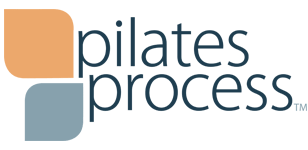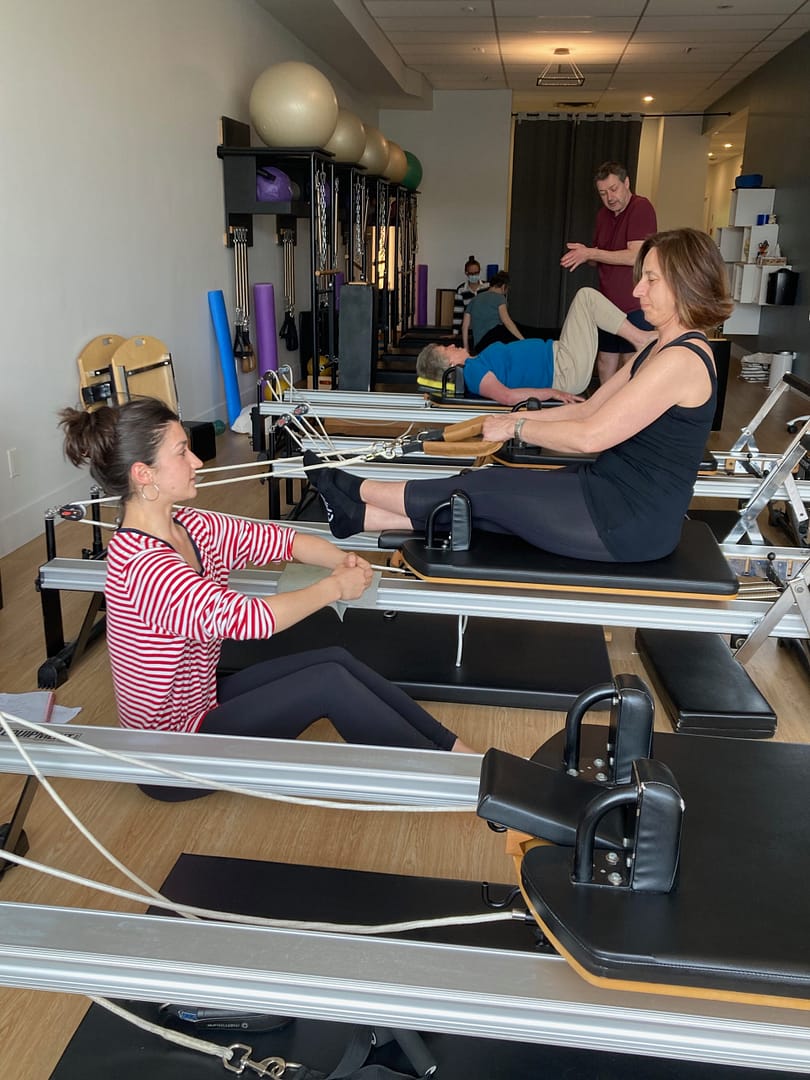by Laura Helsel Gauthier
Director, Pilates Process™
“You don’t want to work with just anyone. With your low back issues, you want to work with a Certified Pilates Teacher”.
I overheard this in a coffee shop recently. It took great restraint not to interrupt.
Yes. You do want to work with a Certified Pilates Teacher.
But what does that even mean? What does Pilates Teacher Training or a Pilates Instructor Course even mean?
It can mean a lot. Or nothing at all, depending on the program. That’s part of the problem, and the debate within the Pilates community.
Pilates like yoga, is not regulated in North America. So although Pilates may have been recommended by your physiotherapist or physician, there is no minimal standard of teaching, or knowledge that dictates what certified actually means. Every method can self regulate which has lead to a great range of certification practices. At the low end of the spectrum is certification following an online course (without a formal exam process). With cameras off and little actual participation required this doesn’t adhere to any standards and it’s doubtful a certificate is ever held back. This type of training is becoming more common. A 20 hour course is still referred to as a 100 hour training course, because it’s common practice that 80% of the hours are self study. Self study and review are extremely important in this profession, but it can also give the impression of more thorough training.
Comprehensive Exams
At the other end of the spectrum we have full comprehensive exams which was, at one time, the only training/exam path available. Comprehensive training means the student learns and is tested on all levels of all Pilates apparatus at one time. The order of advanced Ladder Barrel and every obscure Cadillac exercise had to be known and assessed in one long practical and written test.
Reflecting on my own comprehensive training and exam process in the 90s, I have fond memories, examined by PIlates icon Moira Stott herself. I loved the immersion, the details and structure and the challenge. Could have been the ballet background.
Choreography
I reflected on this comprehensive process when we started our Pilates Process training in 2005 as I really believed in an earned certification and was aware of concerns about Pilates being “watered down”. What I’ve learned since then, is that the comprehensive approach and exam isn’t actually realistic for everyone and it can stand as an obstacle blocking some excellent teachers from certification. The amount of choreography alone that has to be available to teach at any moment, is unrealistic for many and doesn’t always match real life teaching needs.
We quickly came to realize that dividing training into pockets that can be separately learned, examined and assessed is helpful for many. Mat and Reformer can be separated as can advanced work for example. Learning in layers can be more realistic and at times the content is more deeply absorbed than when the entire, massive, repertoire is assessed at once.
National Pilates Certification Process (formerly PMA)
I should mention here that there has been efforts in the USA to create an international (although labeled national?) standard for Pilates – a minimum baseline. This online exam has been available for fully comprehensively trained teachers only. I certified through this exam myself and it definitely serves a purpose although it has not gained enough traction here, and as it is a clumsy title and process, I don’t expect it will.
Soft Skills
Teaching requires a lot of skills that aren’t easily tested in an exam scenario: effective programming, decision making, listening and adapting. Written exams that include case studies are a useful way to incorporate some of these elements as are extensive practice teaching opportunities and we have embraced both in our training.
Apprentice Hours and Experience
Teaching is not performing and as much as one can prepare, some skills can only be honed with actual teaching experience. When you’re teaching someone you don’t know things come up that are unpredictable. We’ve always included actual guided teaching in our training and with every course we run, we see the continued benefits of real teaching hours.
The Pilates Process™ Exam
Our Foundational Mat and Reformer courses have extensive exams, both written and practical. These are typically done 2-6 weeks following course completion and after many hours of teaching experience. Other courses are then added later so that the full repertoire and full equipment training is added over 1-2 years.
Our take is that the best practices for certification are the most labour intensive and time consuming. Written exams, guided teaching hours and individually booked practical exams that offer full feed back and guidance moving forward, delivered by deeply experienced, highly trained teacher trainers. It’s a labour of love.
Want to be a Pilates Body?
Due to this extensive practical training our Toronto studio frequently needs Pilates volunteers so that our trainees can practice on a variety of people. If you’d like to be instrumental in developing the next fabulous teacher, let us know. We’ll contact you with more details.
Laura Helsel Gauthier
Director, Pilates Process
Teacher, Presenter, Writer, Franklin Method® Educator

